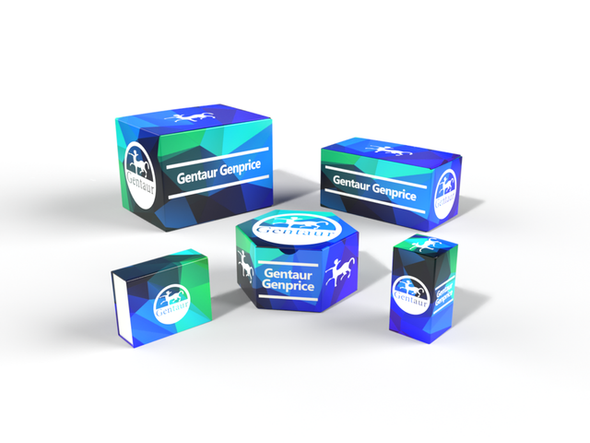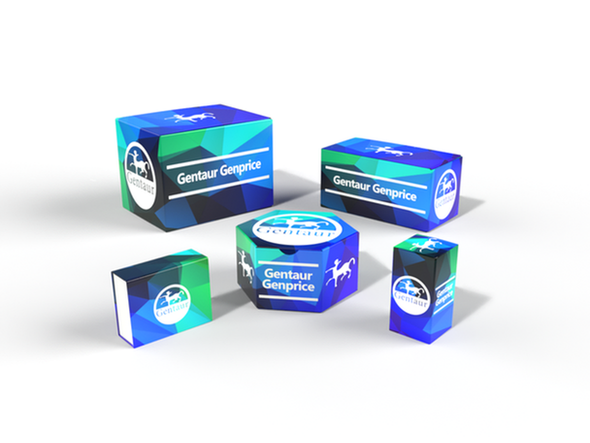749
Rat Adenosine receptor A1 (ADORA1) ELISA Kit | KTE100340
- SKU:
- 749-KTE100340
- Availability:
- Usually ships in 5 working days
Description
Rat Adenosine receptor A1 (ADORA1) ELISA Kit | KTE100340 | Gentaur UK, US & Europe Distribution
Application: This Rat Adenosine receptor A1 (ADORA1) ELISA Kit employs a two-site sandwich ELISA to quantitate ADORA1 in samples. An antibody specific for ADORA1 has been pre-coated onto a microplate. Standards and samples are pipetted into the wells and anyADORA1 present is bound by the immobilized antibody. After removing any unbound substances, a biotin-conjugated antibody specific for ADORA1 is added to the wells. After washing, Streptavidin conjugated Horseradish Peroxidase (HRP) is added to the wells. Following a wash to remove any unbound avidin-enzyme reagent, a substrate solution is added to the wells and color develops in proportion to the amount of ADORA1 bound in the initial step. The color development is stopped and the intensity of the color is measured.
Detection Method: Colorimetric
Conjugate: N/A
Sample Type: Cell culture supernatants#Serum#Plasma#Other biological fluids
Assay Type: Multiple steps standard sandwich ELISA assay with a working time of 3-5 hours. It depends on the experience of the operation person.
Kit Component: • Rat Adenosine receptor A1 microplate
• Rat Adenosine receptor A1 standard
• Rat Adenosine receptor A1 detect antibody
• Streptavidin-HRP
• Standard diluent
• Assay buffer
• HRP substrate
• Stop solution
• Wash buffer
• Plate covers
Features & Benefits: Rat Adenosine receptor A1 (ADORA1) ELISA Kit has high sensitivity and excellent specificity for detection of Rat ADORA1. No significant cross-reactivity or interference between Rat ADORA1 and analogues was observed.
Calibration Range: Please inquire
Limit Of Detection: Please inquire
Usage Note: • Do not mix components from different kit lots or use reagents beyond the kit expiration date.
• Allow all reagents to warm to room temperature for at least 30 minutes before opening.
• Pre-rinse the pipet tip with reagent, use fresh pipet tips for each sample, standard and reagent to avoid contamination.
• Unused wells must be kept desiccated at 4 °C in the sealed bag provided.
• Mix Thoroughly is very important for the result. It is recommended using low frequency oscillator or slight hand shaking every 10 minutes.
• It is recommended that all samples and standards be assayed in duplicate or triplicate.
Storage Instruction: The unopened kit should be stored at 2 - 8°C. After opening, please store refer to protocols.
Shipping: Gel pack with blue ice.
Precaution The product listed herein is for research use only and is not intended for use in human or clinical diagnosis. Suggested applications of our products are not recommendations to use our products in violation of any patent or as a license. We cannot be responsible for patent infringements or other violations that may occur with the use of this product.
Background: The receptor is an adenosine receptor that belongs to the G-protein coupled receptor 1 family. There are 3 types of adenosine receptors, each with a specific pattern of ligand binding and tissue distribution, and together they regulate a diverse set of physiologic functions. The type A1 receptors inhibit adenylyl cyclase, and play a role in the fertilization process. Animal studies also suggest a role for A1 receptors in kidney function and ethanol intoxication. Transcript variants with alternative splicing in the 5' UTR have been found for this gene. Activation of the adenosine A1 receptor by an agonist causes binding of Gi1/2/3 or Go protein. Binding of Gi1/2/3 causes an inhibition of adenylate cyclase and therefore a decrease in the cAMP concentration.
Alternative Names: ADORA1; RDC7; OTTHUMP00000039091
Search name: ADORA1; RDC7; OTTHUMP00000039091
Tag: ADORA1










